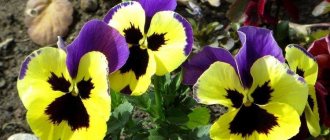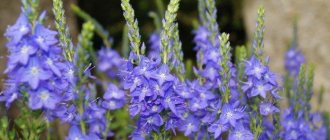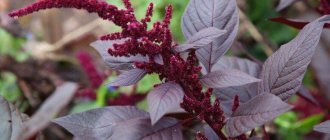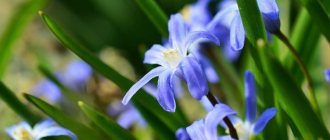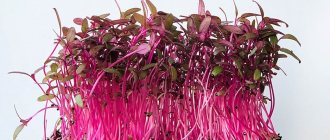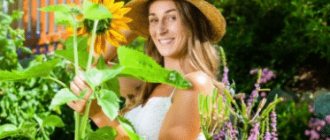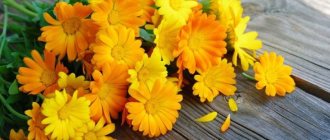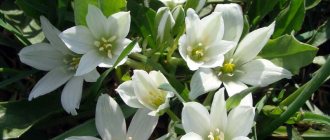African daisies or osteospermum are very popular when arranging balconies and terraces. Numerous varieties of this plant delight with interesting flower shapes, beautiful shades and very long flowering. This is a not very demanding plant that especially loves the sun. This article describes how and when to plant osteospermum, growing seedlings from seeds, planting and care in open ground, and what interesting varieties there are.
general information
Osteospermum is a very diverse genus, which includes completely herbaceous species and shrubs. They belong to the aster family, and came to us straight from the African continent. In colder climates, osteospermum is grown as an annual. And this is a wonderful decoration for your garden.
Osteospermum blooms at the height of summer and stops only in the second half of autumn. The average height is about 1 m, but it is impossible to say for sure here, because there are too many different varieties. The leaves of osteospermum are serrated, but unevenly, which is why they look doubly unusual.
The bright flowers are actually basket inflorescences. The diameter can vary from 4 to 11 cm, and the most common shades are white, pink, crimson, purple, yellow and orange. Another amazing feature is that the seeds are formed on the petals, and not in the middle.
Photo: avto.goodfon.ru
3.Varieties:
3.1. Noticeable osteospermum - Osteospermum jucundum
Abundantly flowering, low-growing, hardy, perennial plants, the height of which often does not exceed 15 cm. Tall varieties can reach 90 cm in height. Stems are erect and strong. The leaves are lanceolate, gray-green, and when damaged they emit a specific odor. The edges of the leaf plates can be either entire or have small denticles. Flower baskets are most often painted in shades of white, pink or lilac. There are plants with yellow baskets. The flowers reach 5–6 cm in diameter. Flowering begins in May and may end in mid-summer.
↑ Up,
3.2. Shrub osteospermum - Osteospermum fruticosum
Plants of this variety are distinguished by abundant and long-lasting flowering, as well as great resistance to stress - the bushes are easily grown in polluted spaces and can withstand serious temperature fluctuations. These herbaceous perennials grow up to 45 - 60 cm.
↑ Up,
Types of osteospermum
There are about 50 types of osteospermum in nature, but not all of them are cultivated in the regions of Russia. Here are the varieties you should pay attention to!
Osteospermum Eklona
A very diverse category, which includes almost creeping bushes and tall spreading varieties up to 1.5 m. In most cases, white petals with pink veins radiate from the red or purple center.
Photo: moi-6-sotok.rf
Osteospermum pleasant
A very beautiful decorative variety with spectacular voluminous inflorescences of several rows of petals. Based on this species, garden hybrids have been bred that can change color.
Photo: oir.mobi
Shrub osteospermum
Creeping shoots quickly grow into a large flowering carpet. These are mainly white, lilac and red varieties, but the shape and size of the flowers may vary.
Photo: pixabay.com
Osteospermum noticeable
In its native Africa, it is a perennial that blooms almost all year round. Even here, its unusual pink petals delight us throughout the warm season.
Photo: oir.mobi
Osteospermum hybrid
An extensive category that includes all the most interesting developments by the breeder. They are often better adapted to different weather conditions and are also more decorative.
Photo: zen.yandex.ru
Marigolds (50 photos): types, care and planting in open ground
Favorable period for landing
At the time of disembarkation you should have a strong shoot. Seedlings should be transferred to the ground in late spring - early summer, when the weather is consistently warm.
Seedlings should be planted in an area that is well heated by the sun. The main thing is that there are no sharp winds here. The soil for the plant must be fertile, loose, and fertilized.
The process of planting in the ground is best done on a sunny and warm day. The seedlings need to be dug out of the container along with the soil and placed in a prepared hole. Compact the soil and then water it with water. A large distance must be maintained between plants. It should be approximately 50-100 cm.
Osteospermum care
For an exotic African plant, osteospermum is quite unpretentious. It adapts well to our conditions and thrives with minimal care.
Temperature
Osteospermum tolerates heat well, so even the hottest Russian summer is quite comfortable for it. At the same time, it can withstand short cold spells at night and even light frosts, which allows it to bloom until severe cold weather.
Photo: tonshalovsky.ru
Lighting
Osteospermum needs bright sunlight, it’s not for nothing that it comes from Africa. It tolerates even direct sunlight well. But the shadow will not destroy the plant, but the flowering will be much poorer.
Photo: zen.yandex.ru
Watering
Osteospermum disgustingly tolerate high humidity, as a guest of their dry regions. The flowerbed does not need to be constantly watered. Careful and moderate watering will only be needed during prolonged drought.
Photo: wordyou.ru
The soil
Soil of any density is suitable, but breathable, loose soil is still preferable. Preferably slightly acidic or neutral, but we advise you to avoid alkaline ones.
Photo: oir.mobi
Fertilizers and fertilizing
For lush flowering, osteospermum needs regular feeding with complex fertilizers. It is advisable to apply them every 2-3 weeks, but in a small dosage - half the norm.
Photo: sadogorod25.ru
Wintering
In general, in our latitudes, osteospermum is an annual plant, and it dies with frost. But you can dig up the plant in the fall, without waiting for cold weather, and move it into a pot in a cool room. This way it will continue to bloom.
Photo: sbermegamarket.ru
Eschscholzia (60 photos): types, planting and care in open ground
Mr. Summer Resident recommends: ideas for placing Cape chamomile in the garden
The plant looks great in both the landscape of large and small gardens. Planted as a border plant, combined with stone compositions, also suitable for mixed flower beds and mixborders. Its unpretentious appearance makes the plant universal and can be combined with a large number of plant species and varieties.
Used to decorate lawns, it will attract attention even to a lonely bush. Compact varieties are suitable for planting in pots, for hanging flowerpots, balconies and terraces. It would be a good idea to tie up the stems if the bush’s splendor does not allow it to maintain its shape. Dwarf varieties can be used as ground cover plants. Osteospermum in white tones will create a wonderful composition with lavender, iberis, forget-me-nots and petunias.
Planting and propagation
Osteospermum is propagated by seeds, and even a beginner can handle it. Plant in regular containers with peat closer to mid-spring, carefully deepen with a toothpick and leave in a warm place at 20 degrees. Within a week, shoots will appear, and you can move the container closer to the sun.
Unlike many flowering plants, it is best not to soak osteospermum seeds before planting. It is enough to leave them in a damp cloth for a couple of hours. Seedlings can be pruned as needed when at least 2-3 adult leaves appear on them.
If you have tall varieties, we advise you to pinch the top a little so that the plant grows faster and then blooms more luxuriantly. Gradually harden the seedlings on the balcony, and by the end of spring transplant them into open ground at a distance of 20-25 cm from each other.
Photo: attuale.ru
Description
Osteospermum is grown outdoors as an annual and indoors as a perennial. Strong cylindrical stems are partially woody, the central ones stand up, the side ones spread, forming a ball-shaped bush.
The oblong sessile leaves on the cuttings are green, with teeth along the edges. Basket-like inflorescences form between the trunk and leaves located in the upper parts of the branches. The center of the flower is tubular, with points at the core.
Along the outer edge there are flowers called lingual:
- flat, slightly twisted tubes;
- plain, less often variegated;
- with petals of different colors.
The petals close at night when it rains. Large, dark osteospermum seeds are formed in ligulate florets. African chamomile is not afraid of drought, frost down to -5°C. In the south, osteospermum is perennial, in areas with a temperate climate it is annual.
Pest and disease control
Osteospermum is fantastically resistant to pests and infections. The main problems arise only if the plant is regularly flooded. Then the roots begin to rot, and the flower itself suffers from fungus. Severely damaged osteospermum will most likely have to be destroyed. In the early stages, simply reduce watering, remove all diseased areas and use fungicides.
Photo: imageban.ru
Flower Hazel grouse (50 photos): types, planting and care in open ground
Common Questions
Question to an expert: The lower leaves of seedlings curl downwards - is this normal? Curling of the lower leaves may indicate several problems, including lack of lighting (accompanied by loss of turgor) or rotting due to excessive watering (can develop against the background of the appearance of black spots). In some cases, such a signal is regarded as a natural aging process or the need for fertilizer.
Is it true that you can speed up the germination of seeds by placing them in the refrigerator? Experienced gardeners often resort to stratification - placing seeds in a cold or humid environment with limited access to oxygen. Such measures are needed in order to launch all the necessary mechanisms for seed growth.
Is it possible not to soak the seeds before planting? An alternative to stratification can be short soaking of seeds in growth stimulants such as Epin-Extra or Zircon. You can purchase the latter at any florist or garden department.
Will osteospermum continue to bloom in the house in the fall? Some gardeners prefer to grow osteospermum as a perennial plant, taking it indoors at the first steady cold snap in order to return the flower to the beds the following spring. As for flowering at home, it is possible, but you certainly cannot expect a lush harvest, since the conditions are far from being suitable for growing in open areas.
Osteospermum – photo
With all the simplicity of the inflorescences and colors, the carpet of these African daisies looks simply luxurious. Just look!
Photo: agbina.ru
Photo: datchnik.ru
Photo: tezarvape.ru
Photo: most-beauty.ru Photo: dic.academic.ru
Photo: mykaleidoscope.ru
Photo: wallbox.ru
Photo: pixabay.com
Photo: na-dache.pro
Photo: mykaleidoscope.ru Photo: distano.ru
Photo: 2sotki.ru
Photo: flo.discus-club.ru
Photo: mykaleidoscope.ru
Photo: agbina.ru Photo: pxhere.com
Photo: sadtem.ru Photo: ravaka.ru
Photo: grandgames.net
Photo: happymodern.ru Photo: semstomm.ru
Photo: ravaka.ru
Photo: joinn.com
Photo: 2sotki.ru
Photo: prorastet.ru
Did you like the post? Subscribe to our channel in Yandex.Zen, it really helps us in our development!
Flower for home cultivation
Flower lovers who do not have land plots grow African chamomile Sky and Ice in apartments. Osteospermum grows from seeds, propagated by cuttings, dividing the bush during transplantation.
Many gardeners, in order to extend the flowering period, bring flowerpots into the winter garden or apartments. An adult plant tolerates replanting well if it is dug up with a large lump of earth. When grown at home, when night temperatures rise to +12 °C, the flower is taken out onto balconies, loggias, and given a short period of rest. When the atmospheric air warms up to +17...+20 °C, osteospermum will again delight with blue-eyed daisies.
